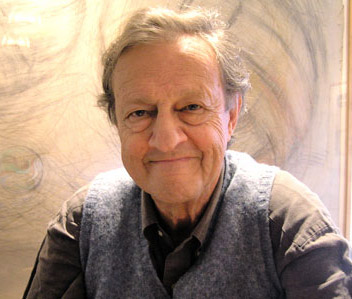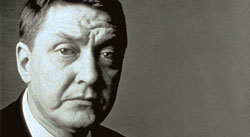‘I know it’s something of a cliché to say this, but we really do view graphic design, and especially logo design, as a problem solving process, a process not dissimilar to that used in other related disciplines such as architecture and engineering. The initial task is to understand and define what the issues are, and what the goals should be. With that background in mind, we strive to come up with the best possible design “solution” to the problem, using imagination and artistic invention to create something memorable and meaningful. In that sense, our approach has not changed at all. The way we went about designing logos for Armani Exchange and the Library of Congress in 2008 is essentially the same as the way we went about designing logos for Chase and Mobil in the 1960’s.’
This quote taken from an interview with Tom Geismar on ‘Logo Design Love’ website illustrates his extremely successful formula for creating over one hundred very contented clients.
He was born on 15 July 1931 in Glen Ridge, New Jersey, and subsequently undertook studies at both the Rhode Island School of Design and Brown University. He was awarded his Master’s degree at Yale University, School of Art and Architecture in the 1950s, where he met Ivan Chermayeff while they were both engaged in research on typography. They subsequently joined forces with Brownjohn to establish the renowned design company Brownjohn, Chermayeff and Geismar. Upon completion of their respective degrees, Chermayeff relocated to New York, while Geismar enlisted in the American Army and pursued his interests in graphic design, working as an exhibition designer and graphics specialist.
By the time he enlisted in the military, he had become a founding partner, along with Brownjohn and Chermayeff, of the graphic design company Brownjohn, Chermayeff and Geismar. They achieved considerable renown in the late 1950s and early 1960s, a period characterised by a revolution in American graphic design. New York was an environment conducive to creativity, with a plethora of artistic disciplines influencing and inspiring one another.
In the field of architecture, the United Nations building and Lever House had recently been constructed, as had the inaugural building designed by Mies van der Rohe in the late 1950s. In the realm of the arts, Abstract Expressionism was superseded by the rise of pop culture. The musical West Side Story was a considerable success in the theatre. The jazz community expressed grief at Charley Parker’s passing while celebrating the contributions of Ornette Coleman, Eric Dolphy and John Coltrane.
In the field of graphic design, numerous talented individuals made their mark, including renowned figures such as Saul Bass, Paul Rand and Alvin Lustig. These designers drew inspiration from a diverse range of sources, including visual imagery, publications and other design elements. In 1960, Brownjohn, Chermayeff and Geismar were responsible for initiating the use of abstract corporate symbols for companies such as Chase Manhattan. They have since become responsible for designing in excess of a hundred corporate identity programmes for companies including Xerox, Best Products and Rockefeller Center, in addition to Chase Manhattan.
Geismar assumed the primary responsibility within the partnership of Brownjohn, Chermayeff and Geismar for the firm’s exhibitions, designs and world fair pavilions, including the Ellis Immigration Museum and the Statue of Liberty Museum, in addition to others. He was responsible for a redesign of the Star Spangled Banner at the Smithsonian National Museum of American History. He has been the recipient of a number of significant accolades, including one of the inaugural Presidential Design Awards, which contributed to the establishment of a national system of standardised transportation symbols.







